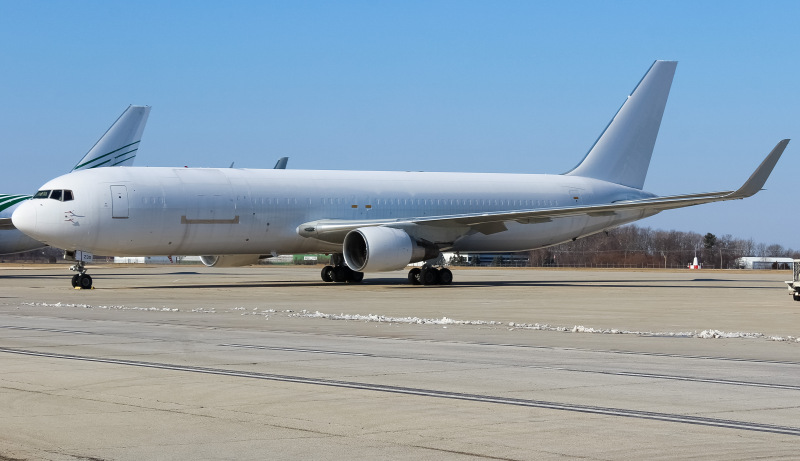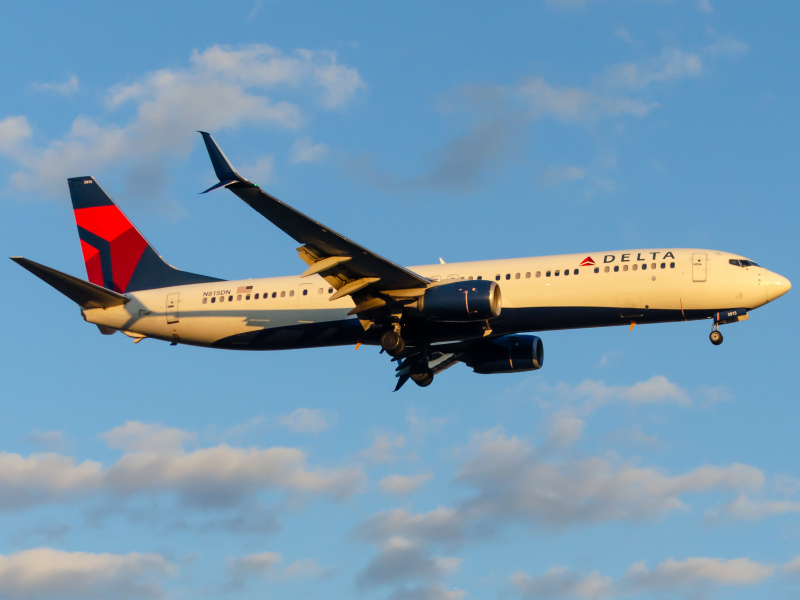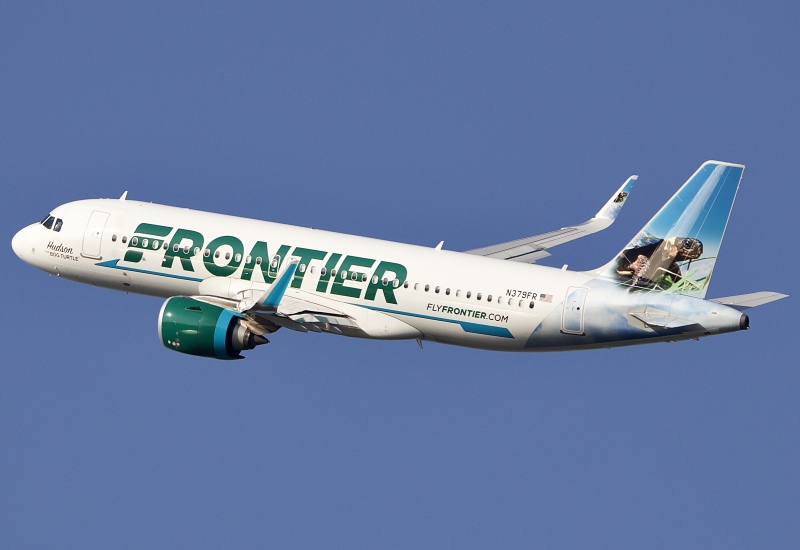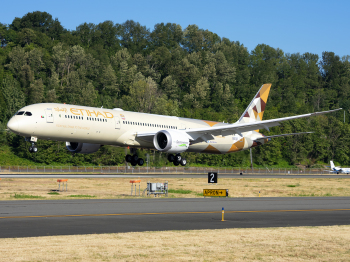We fly from country to country because it is fast and convenient. Significantly when experts recognize the airplane as one of the safest. We don't really think about what led to this. Hint: it's not just the lack of accidents. There are technologies behind safety, and we'll look at the latest ones.
.

Artificial Intelligence
Yes, this "threat to humanity" takes care of us during flights. Let's start with the collision avoidance system. Each AI-equipped aircraft constantly interacts with others and ground systems. It receives data on aircraft positions, paths, and potential threats, such as collisions or intrusion into restricted airspace. You can write an entire research paper on this, read in this review by John Milovich.
AI constantly scans space using various sensors, from radar to GPS. During threats, it automatically calculates optimal routes, and pilots receive warnings of potential danger. AI can also interact with automatic pilot systems to operate in the busiest airspace.
Advanced Communication Systems
Don't underestimate these guys. It's about more than just movies and the ability to scroll through Instagram during the flight. Thanks to them, pilots keep their finger on the pulse in any situation. They receive weather updates, navigation data, and important notifications about any changes. They also exchange information about routes, speeds, and intentions with other pilots.
Even standard pre-takeoff safety training can only be done with communication systems. In addition, pilots communicate with control centers using radio, satellite, and other systems. It allows the centers to track movement, coordinate, and take action in case of potential threats or emergencies.

Person Identification
The standard way is passports. These documents contain name, date of birth, photo, and other identification data. Seems like everything you need for verification. However, fraud hasn't gone away, so more sophisticated methods have emerged over time.
We're talking about biometric data, such as fingerprints, face recognition, iris scanning, etc. These data are unique for everyone and provide highly accurate identification. There's still room for improvement, especially in terms of better training. Staff should receive regular training on security best practices and the correct system use.
Virtual Reality
Yes, it has even reached the skies, significantly contributing to safety. Here are a few examples:
- Simulation training. VR provides pilots and ground personnel a realistic experience of flying aircraft and performing emergency procedures. They train without risking life and property and improve passenger safety. And you don't even need to find out, "Is nerdify illegal?"
- Data visualization. VR is suitable for visualizing large amounts of data, such as weather, aircraft traffic, or navigation data. Pilots analyze information faster and act accordingly.
- Monitoring the pilot's condition. It's not yet a widespread practice, but we're moving towards it. Some companies use VR to monitor the pilot's physical and psychological state. Right on the fly, yes. It analyzes eye movements, heart rate, stress level, etc., and provides appropriate tips or warnings if signs of fatigue or stress are detected.

Cybersecurity
Data use is only growing, and this doesn't add to security. Cyberattacks aren't going away; they are increasing in the age of digitalization. Airlines are currently improving their network systems using advanced technologies. At the same time, airports install monitoring systems that track network activity to detect anomalies or potential threats. Just how students monitor quality services in this honest review on LinkedIn.
Challenges and Threats
There is something beyond our control, and it's the biggest problem. For example, weather conditions. Fog, thunderstorms, strong winds, or snow make takeoffs and landings difficult and reduce visibility. Humans cannot eliminate these hazards. However, better weather monitoring and appropriate measures, such as delaying or rescheduling flights, can reduce the risk.
The second thing we want to mention is the human factor. Pilot errors during maneuvers or poor decision-making under stress lead to accidents. In addition, inexperienced or tired crew members can make mistakes during aircraft maintenance, leading to severe consequences. Passengers often endanger themselves and others by ignoring the rules.

Here are some ways to minimize harm:
- Training and supervision. The selection process is already rigorous, but regular refresher courses would be helpful.
- Standardization of procedures. Setting clear standards for all stages of air transportation reduces errors. They already exist, but it would be good to inform passengers about them more often. It would be good if passengers were self-educated on this issue.
- Audit and feedback. Regular information collection helps identify problematic situations and improve processes, just like in Nerdify reviews.
That's it - it's time to book your flight and start your journey. The main thing is to find time in your busy schedule by delegating tasks after the essay review. Thanks to modern security systems, everything goes smoothly without unnecessary worries. Currently, airplanes are second after trains in terms of safety and first in terms of comfort and speed.
Comments (0)
Add Your Comment
SHARE
TAGS
INFORMATIONAL Technology AI ChatGPT Commercial Aviation Cargo Aviation Safe Flying Air SafetyRECENTLY PUBLISHED
 Learjet Owned By Vince Neil Crashes Into Gulfstream Jet, 1 Fatality Confirmed
On February 10th, around 14:30 local time, a Learjet private jet aircraft crashed into another private jet after landing at Scottsdale Airport (SCF) in Arizona.
NEWS
READ MORE »
Learjet Owned By Vince Neil Crashes Into Gulfstream Jet, 1 Fatality Confirmed
On February 10th, around 14:30 local time, a Learjet private jet aircraft crashed into another private jet after landing at Scottsdale Airport (SCF) in Arizona.
NEWS
READ MORE »
 Seattle Plane Strike 2025: Japan Airlines and Delta Collision Raises Safety Concerns
Seattle-Tacoma International Airport saw a concerning incident on Wednesday morning when a Japan Airlines (JAL) plane clipped a parked Delta Air Lines jet while taxiing. Thankfully, no one was injured, but passengers described the collision as a frightening experience.
NEWS
READ MORE »
Seattle Plane Strike 2025: Japan Airlines and Delta Collision Raises Safety Concerns
Seattle-Tacoma International Airport saw a concerning incident on Wednesday morning when a Japan Airlines (JAL) plane clipped a parked Delta Air Lines jet while taxiing. Thankfully, no one was injured, but passengers described the collision as a frightening experience.
NEWS
READ MORE »
 Ethiopian Airlines Expands Cargo Fleet with New Boeing 777 Freighter
Ethiopian Airlines has expanded its cargo fleet with a brand-new Boeing 777 Freighter, registered as ET-BAB (MSN 68140). The aircraft was delivered directly from Boeing’s factory in Everett, Washington, USA, and landed at Addis Ababa Bole International Airport at 3:41 PM (GMT+3) on Wednesday, January 22, 2025.
NEWS
READ MORE »
Ethiopian Airlines Expands Cargo Fleet with New Boeing 777 Freighter
Ethiopian Airlines has expanded its cargo fleet with a brand-new Boeing 777 Freighter, registered as ET-BAB (MSN 68140). The aircraft was delivered directly from Boeing’s factory in Everett, Washington, USA, and landed at Addis Ababa Bole International Airport at 3:41 PM (GMT+3) on Wednesday, January 22, 2025.
NEWS
READ MORE »





